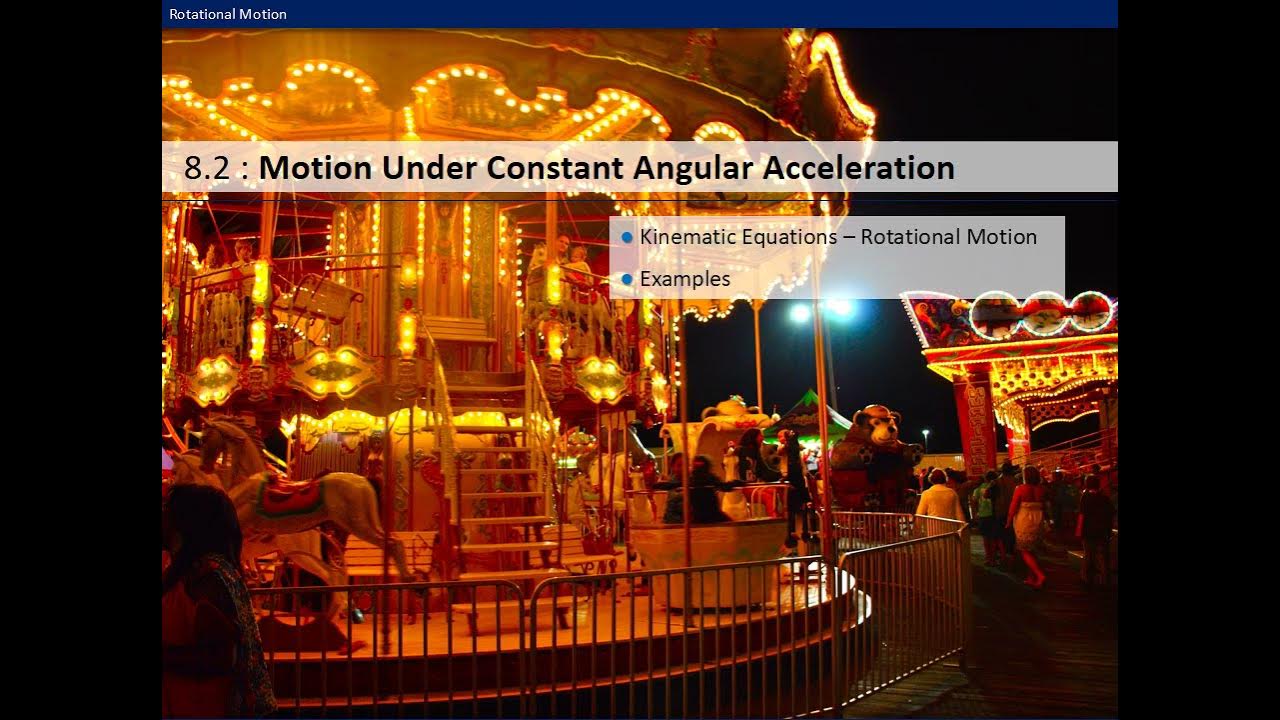Calcular frecuencia y periodo - MCU
Summary
TLDRIn this educational video, the host explains a physics problem related to rotational motion. The exercise involves a turntable disc rotating at 45 rpm. The video walks viewers through the process of converting angular velocity from revolutions per minute (rpm) to radians per second, and calculating the frequency, period, tangential velocity, and centripetal acceleration of the disc. By using key equations, the host provides step-by-step solutions, making complex concepts accessible. Ideal for students learning about circular motion, the video emphasizes practical applications and unit conversions in physics.
Takeaways
- 😀 The video covers a physics exercise involving the calculation of angular velocity, frequency, period, tangential velocity, and centripetal acceleration of a record player disk.
- 😀 The disk is spinning at a constant angular velocity of 45 revolutions per minute (RPM), which is the starting point for the calculations.
- 😀 The angular velocity is calculated by converting RPM to radians per second using a conversion factor, yielding 4.7 radians per second.
- 😀 Frequency is determined using the formula where angular velocity is divided by 2π, resulting in a frequency of 0.75 Hz, meaning the disk completes 0.75 revolutions per second.
- 😀 The period is calculated as the inverse of the frequency, leading to a period of 1.33 seconds. This means the disk takes 1.33 seconds to complete one full rotation.
- 😀 Tangential velocity is calculated by multiplying the angular velocity by the radius of the disk, with a result of 0.7 meters per second (m/s).
- 😀 The centripetal acceleration is calculated using the formula for centripetal acceleration, which involves multiplying the radius by the square of the angular velocity. This yields an acceleration of 3.31 meters per second squared (m/s²).
- 😀 The disk’s radius is given as 15 cm, which is converted to meters for the calculations.
- 😀 The video includes step-by-step explanations and formulas for converting units and solving the problem using standard physics equations.
- 😀 The content is aimed at helping viewers understand basic rotational motion concepts and how to apply them to real-world scenarios like the operation of a turntable.
Please replace the link and try again.
Outlines

This section is available to paid users only. Please upgrade to access this part.
Upgrade NowMindmap

This section is available to paid users only. Please upgrade to access this part.
Upgrade NowKeywords

This section is available to paid users only. Please upgrade to access this part.
Upgrade NowHighlights

This section is available to paid users only. Please upgrade to access this part.
Upgrade NowTranscripts

This section is available to paid users only. Please upgrade to access this part.
Upgrade NowBrowse More Related Video

Dinamika Rotasi • Part 2: Momen Inersia

Fisika kelas 11 | Dinamika rotasi dan kesetimbangan benda tegar (part 1)

(2 of 2) Measuring the Rotational Inertia of a Bike Wheel

Simple Pendulum Motion Derived Using Torque and the Small Angle Approximation

What are the Equations for Kinetic Energy & Angular Momentum of a Point Particle Moving in a Circle?

8.2. Rotational Kinematics

Soal 1 | Kisi-kisi UAS Fisdas 1B 2024
5.0 / 5 (0 votes)